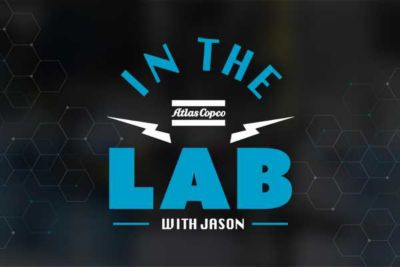Fastening theory in the mining industry
Efficiency is crucial in mining, as improper fastening risks production impact and operator safety. Learn more in this upcoming webinar.A mining plant could miss out on $380,000 in potential profits from unplanned mill downtime in as little as one hour. Maintaining the most efficient production process is the key to success and avoiding scenarios that can halt or disrupt production. One thing that can make all the difference is the tools and equipment your operators are using. From ergonomically-designed technologies to tools that really pack a punch, Atlas Copco has quicker, safer, and smarter products the mining industry needs to avoid costly downtime.
In addition to the products being used, there are three procedures to consider when maintaining a ball mill which include collecting data, taking ergonomics into account, and using more powerful impact wrenches. These methods, if factored into daily production and maintenance procedures, positively impact uptime and thus profits.

Data collection in the time of Industry 4.0
Data collection and analysis is vital to increasing uptime during production. Data reveals patterns and inconsistencies that can be improved or changed, leading to higher quality tightenings. These insights will bring your productivity to new heights while reducing the consistency of poor bolt-level tightening and thus the occurrence of unplanned mill downtime because the technology is able to predict tool failures, recommend optimal maintenance plans, and reduce overall production costs.
In fact, poor data collection can affect not only the grinding mill but the health and safety of operators as well. Loose liners or bolting issues can result from relying on torque measurement alone. This issue with only relying on torque measurements is that there can be a large variation in friction within the bolted joint, resulting in inconsistencies in the clamping force.
Additionally, when bolts become loose or break, the grinding mill can result in significant downtime, damage, or personal injury, all of which are costly to both the operators and/or the company. This is why high precision tightening is vital. By pairing Atlas Copco’s electric nutrunner known as the Tensor REVO – the fastest high torque tool on the market with a maximum tightening torque of 8000 Nm – with the Power Focus 6000 controller, monitoring the tightening torque and angle of tightening will improve the quality of tightening and reduce unplanned mill downtime. Measuring both torque and angle ensures proper tightening, eliminating clamp force discrepancies due to variation in friction within the joints.
Better ergonomics
When performing routine maintenance, aside from quality, the speed of operations is also an important parameter. Impact wrenches help maintain a high speed of work when used for pre-tightening connections. However, many high-torque tools are heavy, making the tool difficult for operators to hold for long periods. During pre-assembly of lining bolt nuts, it's common for three operators to work together in order to operate on each side of the mill. With Atlas Copco’s LMS68 impact wrench, which is 9.6 KG (21 lbs), only two operators are needed. This frees up two operators, allowing them to use an additional LMS68 to get the pre-assembly tightening done even faster or to complete other important tasks.
In addition to the LMS68 impact wrench weighing less than traditional impact wrenches, by incorporating a balancer, less weight is exerted on operators. This enables their work to be completed much more efficiently. Better ergonomics by way of Atlas Copco's ergonomically-designed tools will increase productivity and operator health and safety. Additionally, the combination of using both the LMS68 impact wrench and the Tensor REVO for grinding mills, liner assembly time will be reduced by 50%!

Wrenches that make an impact
It is crucial to your profit to minimize the overall mill downtime without compensating for work quality. When the waste liner needs to be removed, it can take a significant amount of time to detach all the bolts holding it in place. Typically, about 10-15% of the nuts cannot be loosened with typical impact wrenches that have a maximum torque not exceeding 4,000 Nm.
In this case, the remaining bolts are cut off, which is a tedious and time-consuming process that halts production and costs thousands while the mill is inactive. However, removing bolts with our LMS88 impact wrench will save time and thus save money. The LMS88 is a powerful tool with a maximum torque range of 10,000 Nm. This powerful tool will eliminate the need for cutting bolts and reduce mill downtime, allowing the time saved to be used in more productive ways.
To sum it up
There are three commonly overlooked procedures that will affect production when maintaining a ball mill. It is a mistake to not include data collection, high ergonomics, and more powerful impact wrenches into maintenance procedures. The results can be costly and time-consuming. Every minute a grinding mill is down profits are lost, so avoiding unplanned, time-consuming production halts is crucial to production quality and operator health and safety.
Want to learn more about mainenance in the Mining industry? Contact us today!






